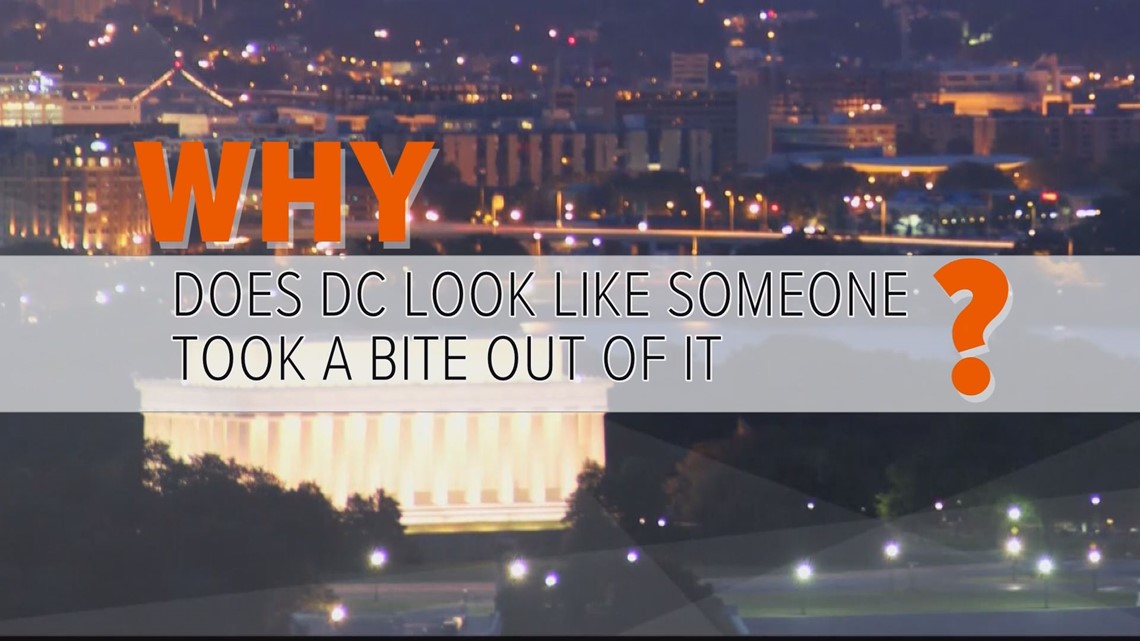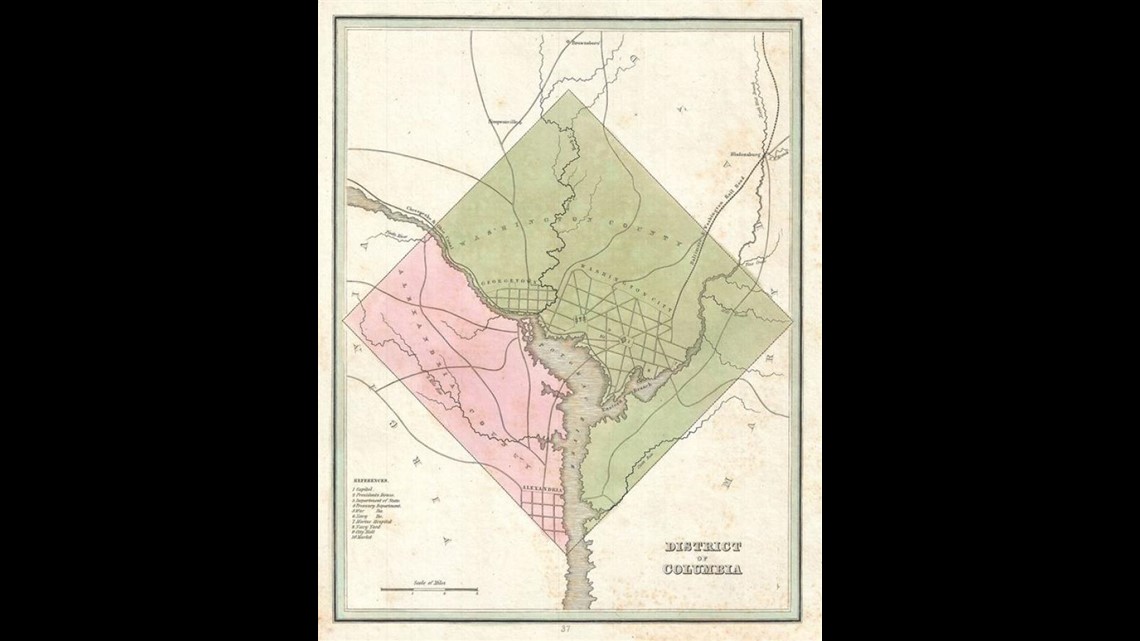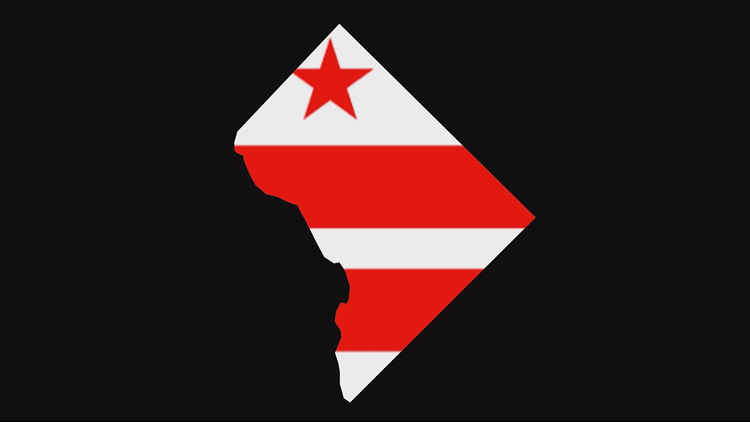WASHINGTON, DC (WUSA9) — By now, most of us know the shape of D.C. But have you ever stopped and really looked at it?
It's a peculiar shape. To the east, it's this perfect diamond, but to the west, it looks like someone took a bite out of it. Why is that? WUSA9 looked into it in the latest edition of "The Why."


First off, it's worth mentioning that many people get this wrong. They figure it's just because the Potomac River sits along that western edge. While that's true, there's more to it.
The story begins in 1790, when the district was officially designated as the Capitol. At the time, both Maryland and Virginia donated land, and together it made a perfect diamond. In the photo below, the green section indicates what Maryland donated, and the pink section indicates what Virginia donated.


Large portions of present-day Virginia were considered part of the district, as it stretched as far west as Falls Church, and as far south as Alexandria.
That diamond-shape remained for more than 50 years, until 1846, when the residents west of the river (present-day Virginia), held a referendum to leave the city. By 1847, the retrocession was official, and the diamond-shape was no more.
So why did the "Alexandrians" want to leave the city? It came down to the economy and slavery.
On the economic front, it came down to a federal law, that mandated that all federal buildings be built on the eastern side of the Potomac. For that reason, current-day D.C. was growing rapidly, while the western side lagged behind. Many of those living in Alexandria and Arlington County felt neglected by the Congress, and wanted to be under the Virginia legislature instead.
The other big factor was slavery. There was a congressional push to ban slavery and the slave trade in the district, to set an example for other states.
Meanwhile, there was a thriving slave trade in Alexandria, and other parts of Virginia. For that reason, these slave-owners wanted to get out of the federal city, before any such legislation was on the books. The city did eventually ban the slave trade, just four years after the retrocession in 1850.
Now you know why DC looks like someone took a bite out of it. Do you have a "why question," you want answered? Put WUSA9 to work, and we'll get you the answer.
You can contact reporter Evan Koslof on Twitter at @ekoslof, on Facebook at "Evan Koslof Reporting," or by email at ekoslof@wusa9.com



